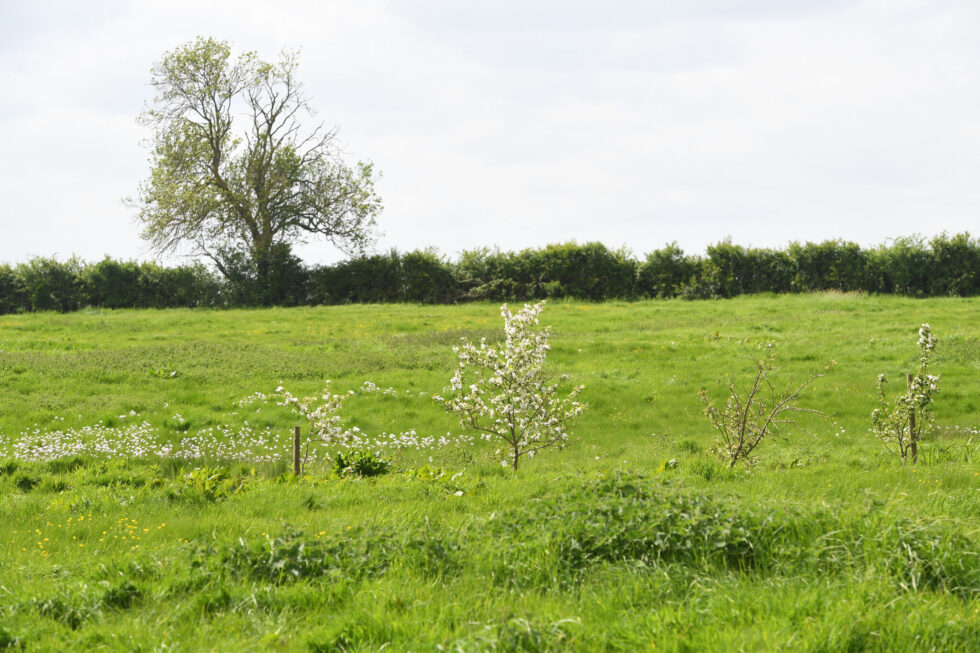The following article by Laudato Si’ Animator Virginia Bell was first published in Independent Catholic News. The article is part of the Animators’ series that turns a critical eye on common church practices to find greener alternatives.
Green Funerals
Green funerals are acceptable to the Catholic Church, and probably to most Christian Denominations. The individual plot is blessed by the bishop, or by the priest at the time of interment, so the ground is consecrated. The funeral company that you choose should be fully aware of the green options available locally, and should be able to inform you as to what is and what is not permissible for a green funeral.
Impact
Green or natural burials should aim to have as little impact on the environment as possible. The main considerations are preservation of natural land and carbon footprint reduction.
Traditional coffins may have been treated with varnishes, sealers etc, and church cemeteries may be sprayed with pesticides and herbicides. Green funerals waste less, pollute less and use more sustainable materials than traditional burials, and they use less energy and cause less pollution than cremations.
Coffin or Shroud
The body can either be buried in a biodegradable casket made of natural materials such as cardboard, wicker, bamboo, banana leaf, willow. Otherwise, it can be wrapped in a simple shroud. Shrouds should be made from a natural material such as cotton, linen, muslin, hemp, silk, or wool. There is obviously room for improvement in this list, as cotton uses a lot of water in its production, and wool and silk are not sustainable and involve cruelty. These materials should be narrowed down to the most sustainable, possibly organic hemp. A good question to ask would be “is the material organic?”
Embalming isn’t permitted, due to the chemicals that are used in the process.
And items can’t be left at the grave, except for natural flowers. Anything else will be removed. It is not necessary to have both a coffin and a shroud; one or the other is fine.

Curlew Glade, Woodland Burial Trust, Keysoe, Beds. Image source: Virginia Bell.
Environment
Only native wild species are planted. Even the grass should be from native seeds.
Woodland burials are set amongst trees and wildflowers. They ensure the preservation of woodland areas. Meadow burials are set in wildflower meadows. Chemical sprays will be controlled, but may not be banned. Check that the company you use has a policy of no chemical spraying. Graves are marked by a simple plaque or a tree as a natural memorial.
Green funerals should be cheaper than traditional ones, as they use minimal products.
Always ask questions to make sure that the best practices are in place.
Other Considerations
There are other things you can do to make the funeral more eco-friendly. For instance, you may be able to reduce transportation by walking or cycling to the burial ground. You could also share cars to minimize the number of cars in the funeral procession. You can use recycled paper for Order of Service sheets, and you can ask people to share so that less paper is printed. Alternatively, you could email the Order of Service to the attendees and ask them to read from their mobile phones.
At the get-together, avoid plastic cutlery and plates, etc. Offer organic and plant-based food and drinks. If you use a caterer, ask for locally sourced organic food if available.
It is traditional to have flowers at a funeral, but bought flowers have a high carbon footprint. Donations to charity are an acceptable alternative. Memorial events such as balloon releases which cause litter are thankfully not popular these days.
By choosing a green funeral for yourself and others in your family, you are showing care for the planet and respect for God’s creation.

Recent Comments